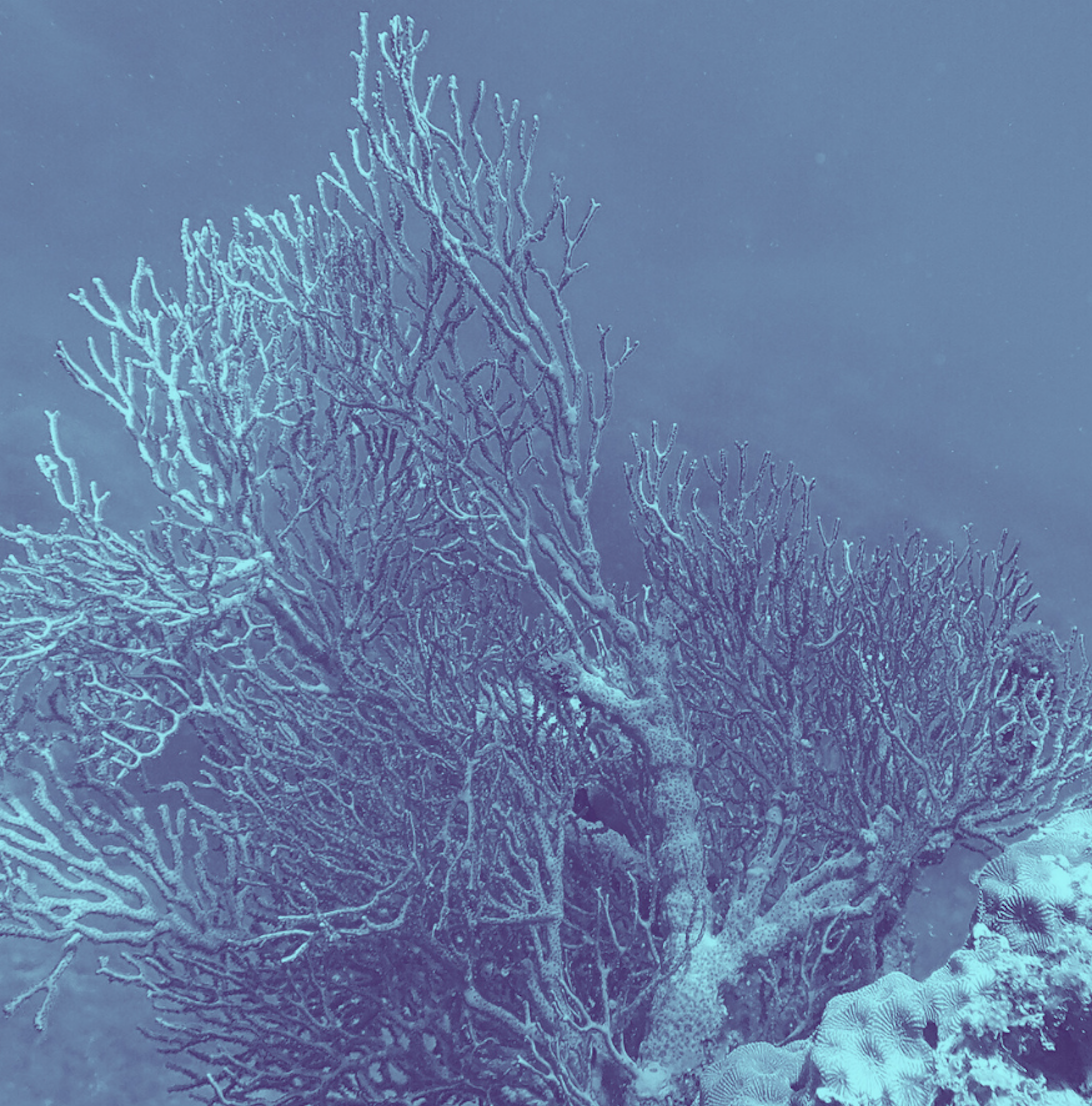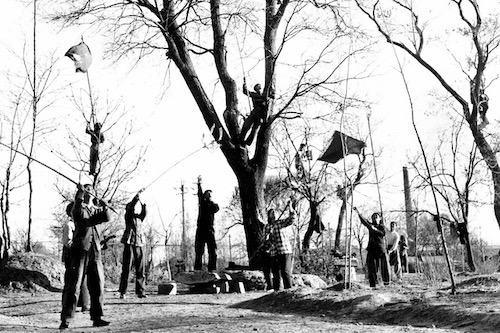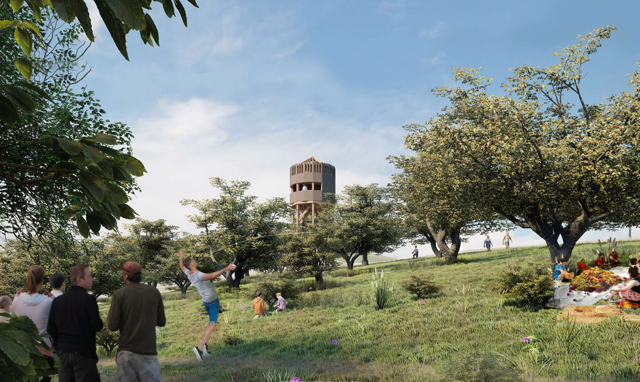
Call for entries: Deniz Villaları – Ecological Crossings
We’re delighted to announce our partnership with the Institut français de Turquie and the Goethe-Institut Türkei in their call for…
Published on 10 June 2020
As part of the COAL 2020 Award, ten artists’ projects have been nominated as finalists for this eleventh edition. Each day, we offer you a meeting with one of the nominated projects.
Eléonore Saintagnan was born in 1979 in Paris, France. She lives and works in Brussels, Belgium.
After studying visual arts and documentary film, Éléonore Saintagnan graduated from the Studio national du Fresnoy and then from Bruno Latour’s SPEAP master’s program at Sciences Po Paris. In 2010, she received the Curator’s Prize at the Salon de Montrouge. In 2018, her film Une fille de Ouessant won the best short film award at Visions du Réel (Switzerland), and then she won the Isère art contemporain prize endowed with a residency at Moly-Sabata. She exhibits in France: CRAC Alsace, Palais de Tokyo, Néon in Lyon, Mains d’œuvres in Saint-Ouen, La Criée Centre d’art contemporain de Rennes, and abroad: Wiels (Brussels), Galerie Elaine Levy (Brussels) as well as in film festivals such as FID Marseille, Hors-Pistes at the Centre Pompidou, or DOC Fortnight at MoMA (New-York), MMCA (Seoul)
PROJECT NOMINATED FOR THE COAL 2020 AWARD : SPARROW PROJECT
In 1958, Mao Zedong undertook a vast campaign to rid China of its sparrows, which were accused of stealing 25,000 tons of rice grain per year from humans. By observing the way of life of these birds, it was noticed that they could not fly more than two and a half hours in a row under penalty of exhaustion. So it was decided that for three days, young and old, men and women, would go out into the streets and fields, armed with flags, gongs and slingshots, to destroy nests, break eggs and prevent birds from landing. Ten million birds perished during this campaign, which finally had the opposite effect to the one expected: the following year, the insects, deprived of their predators, destroyed almost all the crops.
This rather unknown historical event condenses in itself the stakes of the disappearance of the sparrows whose population has dropped by 95% in thirty years. With The Sparrows Project, Éléonore Saintagnan aims to create a sort of carnival ritual to atone for our past human failings, and to remind us, through a research project, of the interdependence between humans and sparrows. A film will mix images shot in color and black and white archives, reconstructing in particular the campaign of Mao Zedong. This cruel fable tells us about the madness of men through a particularly striking example of extermination. This remote episode nevertheless resonates with our time, which sees the progressive and worrying disappearance of birds and biodiversity in general. The artist will also act concretely for the preservation of sparrows through the collective realization of works and nesting boxes in the public space and the mobilization of young people and artists in connection with associations and scientists, promoting the reintroduction of the species in the city.
Describe your current environment, how do you live this era of covid-19 and what is its influence on your artistic process?
I am in Belgium, in Brussels. Here the confinement is less strict than in France. I have to homeschool my 7 year old son Edgar, which leaves me much less time than usual to work. The planned exhibitions and workshops have been postponed to next year. The ceramics studio where I usually go is closed. So I had to adapt, I’m moving on to other things. I was already working a lot with my son before, but now, even more: we make pieces of paper mache, we film the birds that come on the terrace (last week they came to get materials to make their nests). I write when I have time, I read… For the Sparrows project, I imagined what anti-sparrow lyrics could be, and I sent them to Gabriel Mattei, who is a composer. He put them to music. Musician friends send me their interpretations and we move forward in this way, from a distance, waiting for the day when we can all gather to play together. Here is one of the songs:
Small sparrow’s beak
Pick three small grains of wheat
Small sparrow’s beak
Pick three small grains of rice
Fly, sparrow, fly,
Sparrow flies in the wind
Fly, sparrow, fly,
Sparrow steals from people
Little beaks by the millions
Peck the fields of the country
Little beaks by the millions
Threat of shortage
Fly, sparrow, fly,
Sparrow flies in the wind
Fly, sparrow, fly,
Sparrow steals from people
Little beak of vermin
Crush with your stick
On your pan drums
And sing this song
Fly, sparrow, fly,
Sparrow flies in the wind
Fly, sparrow, fly,
Sparrow steals from people
Small sparrow’s beak
Tomorrow will be well closed
And in our beautiful stoves
Lots of golden buns!
Sleep, sparrow, sleep,
You sleep for a long time
Sleep, sparrow, sleep,
And sing the people
What was your first sensitive relationship with living things?
This colony of sparrows living on my terrace is the first thing I see in the morning when I have breakfast. I nurture them, they are my own “companion species”, to use Donna Harraway’s words. I really like this idea of taming animals without taking away their freedom. At the moment, there is also a flycatcher, a wood pigeon and two blackbirds, a male and a female, which sing at the top of their voices, it is very beautiful.
How was the sparrow project born?
The project was born from a correlation between my ceramic work and my interest in ethology.
After having made a series of very large pots that I consider sculptures, and that I exhibited at the Criée art center in Rennes this winter, I wanted to make ceramic pieces that could be hung on walls like paintings. One of the properties of ceramics is that it will burst during firing if it is too thick or if it contains voids, so the shapes must be hollow, with a hole for air to escape. Basically, the characteristics of the nesting boxes are the same: hollow shapes with a flight hole. So it seemed natural to me to make sculptures that could be used as nesting boxes. To encourage birds to nest in them, simply place them on east- or west-facing walls, high enough so that cats cannot access them, and tailor the size of the hole to the species of bird that is already present on the site.
My interest in ethology began with my meeting with Vinciane Despret at Sciences-Po, while I was following Bruno Latour’s master’s degree. I then started to read the writings of ethologists like Konrad Lorenz or Frans de Waal. My nesting box project brought me closer to ornithologists in Brussels who are working on the lack of habitat for birds, especially swifts and sparrows. When I told Erik Etienne, who runs the Sparrow Group in Brussels, that I was a videographer, and that a colony of sparrows lived on my terrace, he said, “Well, then you’re going to be part of the GTM Images, the Sparrow Working Group, which is in charge of feeding our database with images. These images are used to do scientific research on sparrows, and to make educational kits to inform people about the need to protect this endangered species, to feed them and to build nest boxes for them.” This is how I found myself feeding and filming this colony of sparrows, and reading everything I could find about these little critters that have always lived alongside humans.
In 2015, you were making The Wild Beasts about the green parakeets of Brussels, tell us about your interest in birds?
At that time I was not particularly interested in birds. Grégoire Motte and I had a film project about feral animals, i.e. animals that have been domesticated and then released into the wild. Discovering green parakeets in Brussels where we had just settled was a surprise! They appeared in front of our eyes with their fluo green feathers, then we led the investigation… They were brought there in the 80’s by people who were totally unaware of the impact their action could have on biodiversity. I met Guy Florizoone, the owner of the Méli Park, who in 1974, had released about sixty parrots of all colors to “brighten up the grey sky of Brussels” which was overhanging the heads of the visitors of his amusement park. Only the green parakeets survived, and they even reproduced at a crazy rate. Although he clears his name by saying that he is surely not the only one who caused this invasion of parakeets, he acknowledges that the experiment was a huge ethical mistake. At the time, we did not yet have the ecological awareness that we have today.
It turns out that the massive presence of these green collared parakeets is yet another reason for the lack of habitat for endemic species, which include sparrows. So there is indeed a link. But if I am interested in sparrows, it is in a broader perspective which includes in a general way the relations of the men with the animals. This topic has suddenly become topical with the Covid-19 pandemic, which is believed to be caused by too much proximity to certain wild animals. For the past ten years, I have been interested in the place of animals in the lives of humans. In the Middle Ages, they were considered to be full-fledged city beings. They had the same legal status as humans. When one of them committed a murder or a robbery, he was sometimes summoned to court, for a judgment in which he was represented by a lawyer (then called a defender), just like any other human being. Then, with the Enlightenment, it became an object, and today, as more and more fascinating discoveries are made about animal intelligence, its status is being reconsidered.
History and archival images are a recurring aspect of your work.
I studied documentary film. The world we live in – its absurdities in particular – is my primary source of inspiration. The story allows us to understand things a little better, to explain the behaviors of these strange animals that are humans.
In 2018, I made a film called Une fille de Ouessant about this Breton island where, until the 1960s, almost only women lived. I had gone to this island in 2014 for a residency in the Créac’h semaphore, where I had shot video images. It was only two years later, by interweaving these images with black and white archives found on the website of the Cinémathèque de Bretagne, that I built the thread that holds the film. My personal story, that of the impossible mourning of my father, found its place through the story of a collective mourning, that of all the sailors who disappeared at sea, whose women of Ouessant, always dressed in black, haunted by ghosts, waited for news by keeping watch, at night, small wax crosses in place of the bodies.
With the internet, the archive has become an easily accessible material.
We used a lot of archive material from the web for Les Bêtes sauvages, which tells the story of another time and place, where we could not go.
For the Sparrows project, I want to make a film based on archival footage of the Chinese Cultural Revolution. My idea is to replay the scenes filmed in these archives, here and now, without locating the action precisely in space or time.
However, I would like to keep some black and white archive images. These are the dead bird shots. On the one hand, because we are not going to massacre tens of thousands of birds during the shooting, and on the other hand, to show that this story that looks like a fable is not one, that it is a true story. My intention is not to speak of Mao’s China or of a bygone era, but to speak of the madness of men that can resurface – and has already resurfaced – anywhere else.
What is your environmental commitment as an artist and citizen?
Personally and in my work, I try to be as eco-responsible as possible.
When I make ceramics, I do not use any toxic products. Cooking gives off smoke, it’s unavoidable, I try not to overdo it, to cook in a monocook whenever possible.
For my exhibition at the Criée, instead of building black rooms with picture rails to project the videos, we made huts from recycled materials found on site: wood scraps from past exhibitions, crates from the market, chestnut bark recovered from a local producer. It is strange because many people saw in these precarious constructions, African huts, whereas they were rather inspired by the traditional lodges of Breton lumberjacks.
As a rule, I try to make things myself, it teaches me skills and gives me real satisfaction. At home, I have a compost and a neighborhood vegetable garden, and I don’t have a car… but I am well aware that these small habits will not be enough to solve the problem and that strong political decisions are needed to save biodiversity. I hope that my films can address these issues with the public, especially the younger generation.
How do you imagine the world to come?
As much as I like to delve into the past, I’m not very good at predicting the future. We are experiencing things today that were unimaginable six months ago, so we can imagine that anything is possible.
Featured Image: Sparrow hunting by students of the Beijing Normal University (China). Roger-Viollet
We’re delighted to announce our partnership with the Institut français de Turquie and the Goethe-Institut Türkei in their call for…
Since 2022, as part of the Pays de l’Arbresle’s “Les murmures du Temps” art trail, Thierry Boutonnier has been sending…
Since 2022, as part of the Pays de l’Arbresle’s “Les murmures du Temps” art trail, Thierry Boutonnier has been sending…

